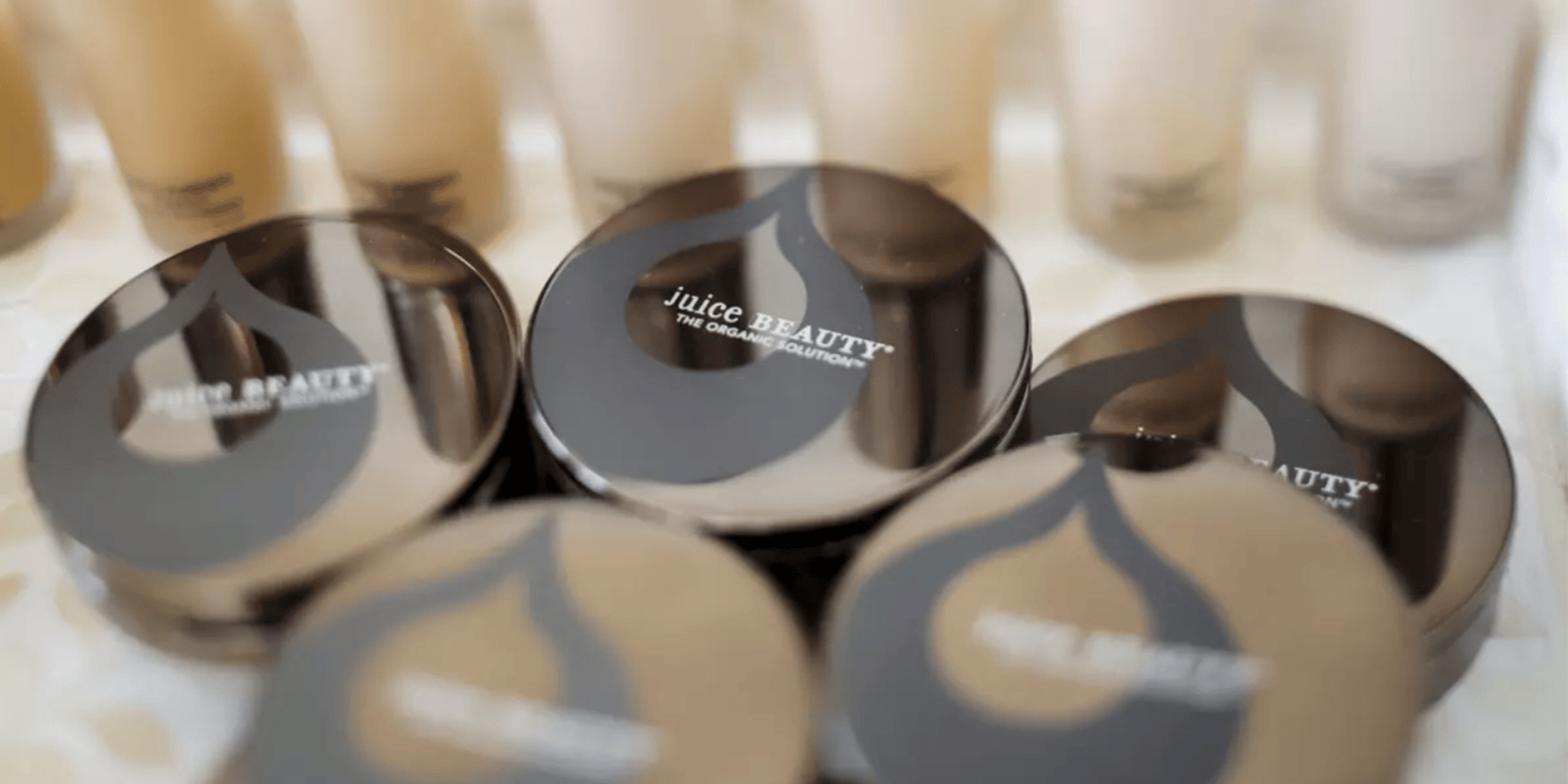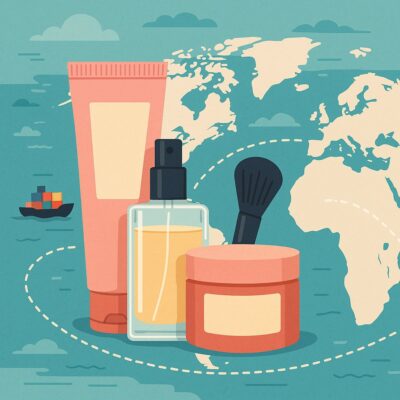
Juice Beauty Runs Out Of Juice. Has Clean Beauty, Too?
Juice Beauty has run out of juice.
The clean beauty pioneer—started by Karen Behnke in 2005, it filed for a trademark on the term “clean beauty” a decade ago and launched National Clean Beauty Day in 2021—is liquidating its assets as part of a bankruptcy alternative called assignment for the benefit of creditors that publication Women’s Wear Daily, which discovered its staff was let go in February, covered first.
An industry source told WWD that Juice Beauty’s retail sales shrunk to $25 million last year, when private equity owner Invus Group appointed Lance Patterson, former CEO of Kate Somerville, to take over the CEO post from Behnke, the brand rolled out a rebrand emphasizing its history and clean beauty values along with clinical trials and effective results, and its distribution spanned Ulta Beauty, Sephora Canada and Amazon, from a reported $100 million in sales six years earlier. Previously, it was available at Whole Foods, Bluemercury, Neiman Marcus, Bloomingdale’s and Credo.
Behnke filed a lawsuit on March 1 against Patterson and Invus Group accusing them of discrimination and pushing her out of Juice Beauty. All told, the financial information resource PitchBook approximates the company raised around $31 million. In addition to Invus, its investors included Able Partners founding partner Amanda Eilian, TPG Capital founder Bill Price and Gwyneth Paltrow.
Paltrow served as Juice Beauty’s creative director for makeup in 2017. The brand partnered with Paltrow’s lifestyle company Goop to introduce the now-defunct skincare line Goop by Juice Beauty in 2016. Kate Bosworth was the face of Juice Beauty in 2021, and Kate Hudson collaborated with it in 2022.
Juice Beauty’s unraveling comes as its once-distinguishing feature, leadership in the clean beauty category, has been muted amid crowding. To understand more about what clean beauty brands face in the current market, for the latest edition of our ongoing series posing questions relevant to indie beauty, we asked 10 founders, retail, marketing and design consultants, investors and brand builders the following: What does Juice Beauty’s liquidation say about clean beauty today? Does a clean beauty brand stand a chance?
- Rich Gersten Co-Founder and Managing Partner, True Beauty Ventures
Clean is a product attribute, not a brand attribute—and it’s far from a true differentiator. In today’s competitive market, standing for clean alone isn’t enough. Yes, there are many successful clean beauty brands today, whatever your definition of clean may be, but these have built their brands off so much more, including an authentic brand story, superior and efficacious product, loyal and engaged communities, etc.
Consumers today are far more informed and discerning about the beauty products they use, increasingly gravitating toward science-backed formulas that are not just safe, but also clinically proven to deliver results. Efficacy is no longer a bonus, it’s a must. One clear example of this is in skincare, where you’re seeing clinical brands led by dermatologists or leveraging innovative technology outperform their category peers.
This evolution in beauty, from the days when clean beauty reigned supreme to today’s emphasis on science-backed efficacy, underscores the need for brands to continuously adapt alongside their consumers. Today, that means delivering proven results backed by scientific rigor and communicating those benefits to consumers across all touchpoints. However, the next evolution in beauty remains uncertain, and as consumer expectations will only continue to rise, agility will remain a critical determinant of success.
- Sandy Saputo CEO, True Botanicals
I'm actually quite grateful for the pioneering OG brands like Juice Beauty that disrupted the industry with clean sustainable approaches to beauty and skincare. They created the clean beauty category and have helped shape the future of the industry, making clean a baseline expectation for consumers.
But while that was a differentiator when these brands launched, ironically, the success of their mission to make the industry cleaner and inspire so many brands to enter this clean category has had the inverse affect of now being a brand in a sea of sameness.
In order to continue to thrive as a clean sustainable company, I recommend to focus on three fundamental things:
- Innovate and invest: We all know that innovation is the lifeblood of our industry, and there are so many exciting breakthroughs happening today. Scientific discoveries, especially in the field of green science, can push a clean brand to much greater heights. I feel it's critical to invest in R&D to develop products that are truly meaningful in people's lives.
- Independently validate and certify: It's no longer enough to communicate to a consumer the number of ingredients that a brand eliminates from their formulas. Being clean unfortunately has become greenwashed, and it's more important than ever to prove to consumers that you are what you say you are. People are now looking for a lot more independent third-party certifications and validation, more transparency of a company's sustainable practices and a lot more education and information.
- Connect beyond clean: We are all storytellers that love to build communities around our brands that have like-minded values and passions. That's what building brands is all about. We can't forget to connect and invite people into our brand worlds, beyond our product proposition. Constantly sharing unique brand stories to create a strong brand identity and most importantly a real and human connection with our customers is what builds a brand that stands the test of time.
In essence, the clean beauty market is definitely evolving. Brands that can adapt to these changes, innovate, validate and prioritize community and the customer experience will be set up well for the future.
- Lara Schmoisman Founder and CEO, The Darl
I’ve always said that clean beauty is important, but here’s the thing: the industry has never really agreed on what clean actually means. The standards are inconsistent, constantly evolving and often influenced by a mix of science, perception and marketing narratives. That makes it incredibly difficult for brands, especially young or indie ones, to keep up without burning through budgets on endless reformulations and packaging changes.
Juice Beauty was ahead of its time in many ways, but what was once their bold differentiator—organic, clean formulations—is now just expected. Clean has become a baseline rather than a brand story. The market is saturated with brands waving the same flag, so unless you're building on top of that foundation with performance, innovation or a unique brand voice, you risk blending into the background.
And let’s be real, consumers have changed. They’re more informed, more skeptical and more results-driven than ever. They want proof that something works. They’re looking for efficacy, not just promises. They want authenticity, not just aspirational beauty campaigns with flawless models, but real people with real results. And they want brands that speak to them honestly, solve a problem and reflect their values.
What does this mean for clean beauty brands today? It means they can’t just rely on the clean label to do the heavy lifting. That’s not enough anymore. It needs to be paired with a strategic omnichannel presence, performance claims, clear messaging and consistent storytelling. And let’s not forget: Brands need to budget for this level of evolution. You’re not just launching a product, you’re constantly adapting, refining and staying ahead of the curve because the landscape moves fast.
As always, I come back to this: Know who you are as a brand. Know what problem you solve. Be clear, be consistent and, above all, be real. Consumers can tell the difference, and they’ll remember the brands that treated them with respect and delivered on their promises.
- Jen Garancheski Content Creator, Jen Luv
There are a few key factors that may have contributed to Juice Beauty’s challenges. First, the brand sits at a relatively high price point. To maintain a loyal customer base at that level, consumers need to see consistent, visible results. This would clearly differentiate the brand from more affordable alternatives that do provide these results.
Though many shoppers are still drawn to the idea that clean cosmetics are safer or better, that belief has been increasingly challenged by real-world product issues. Incidents involving mold and bacterial contamination from clean beauty brands like Tom’s of Maine (2024), Herbivore Botanicals (2019), Suntegrity Skincare (2024), and customer complaints about Kosas (2023) have led to growing consumer skepticism in clean beauty as a whole.
In Juice Beauty’s case, I feel the brand leaned too heavily on clean beauty marketing and may not have focused enough on delivering standout performance that keeps customers coming back. Additionally, clean formulations often rely on gentler or more natural preservative systems, which can lead to shorter shelf lives. For a single product that costs between $30 and $80, it’s understandably frustrating for customers when customers notice an "off" smell before the product is finished. That kind of experience undermines brand trust and repeat purchasing which could damage the brand as a whole.
Ultimately, clean beauty brands can still thrive, but they need to pair their values with innovation, efficacy, and a competitive price point to truly compete. It can’t be just about being clean. They also have to create products that customers don’t want to live without.
- Josh Rosebrook Founder and CEO, Josh Rosebrook
I don't think that Juice Beauty’s liquidation can be attributed to a single factor. Their clean beauty ethos attracted an audience for many years, but, from my perspective, the company had a combination of branding missteps from questionable packaging to dated design language.
I also found the brand to have way too many SKUs, and the categories and products were unclear. Juice seemed to have an absence of standout products as well, which might have also contributed. It was also offered at Whole Foods for 20 years. The brand's availability at a health food/grocery store can affect the image of exclusivity.
Moving forward, the future of clean beauty brands lies in defining their identity beyond cleanliness. There will always be a market for consumers seeking cleaner beauty solutions, and what that means remains to be left with brands to identify. It's a shifting definition, which will always be challenging.
Brands need to express a unique narrative that sets them apart in a crowded space. Nearly all new products today are created with a focus on clean ingredients, so what truly sets a product apart is what matters.
- Cierra Sherwin Founder and CEO, First Production Beauty
I think the liquidation of Juice Beauty is not so much a reflection of whether the clean movement will last, but rather how brands keep up in the constantly evolving ecosystem of beauty. Juice was a pioneer in the clean space when the category didn't even exist. However, 20 years later, clean is commonplace language and consumers are looking for more than clean ingredients, including sustainability initiatives, environmental impact through packaging choices and brand communities they can identify and engage with.
I think Juice lost their footing as new DTC brands came to rise and captured incredible market share over the last 10 years. The moral of the story is that the marketing playbook from 15 years ago won't work today. Brands need to stay agile and innovative within every facet of the business, not only to maintain the loyalty of their current customer, but to capture new audiences.
- Rebecca Bartlett Founder and CEO, Bartlett Brands
Juice Beauty’s liquidation is a case study in how important it is for brands to evolve with the times—and what can happen when they don’t. Their overall positioning and identity remained largely unchanged, even as the clean landscape, consumer preferences and brand aesthetics evolved dramatically. The attempt to rebrand in 2024 was a move that came about a decade too late.
Rebranding is never easy: big money, emotional labor, executive soul-searching, fear of evolving too far, fear of not evolving far enough. When the business is already down-turning, the mountain to climb becomes Everest… during a blizzard… wearing flip-flops.
What can brands learn from this? Without consistent evolution, even a brand with a strong mission and excellent products will become outdated. Juice Beauty is a reminder that branding isn’t just about keeping up appearances—it’s about staying connected to the audience you serve and making bold moves before the storm arrives.
- Susannah Dellinger Founder and CEO, Bright Beauty Collective
Juice Beauty was once everywhere that mattered. At their peak, they were on shelves at Ulta, Whole Foods and Bluemercury. But what once made them groundbreaking—leading with organic and clean—quickly became the industry default. Clean is no longer a competitive edge, it's often the baseline.
Today, entire retailers like Credo and The Detox Market are built on clean and then some, combining performance, innovation and aesthetic. If all your customers know you for is clean, you are going to get lost on the shelf. We saw this start to unfold as Juice lost key distribution and shopper mindshare. While they did attempt a rebrand, without a bold retail comeback and clear customer engagement strategy, new packaging on its own proved just not to be enough.
It is sad to see one of the pioneers struggle, but it is also a warning sign and a chilling reminder for brands everywhere. Shelf space is earned week by week. Staying power belongs to brands with clear points of difference that evolve and grow with their customers while also activating, not just existing in, retail.
- Kathryn Dickinson Owner, Aillea
I think Juice Beauty liquidating their assets shows that just being clean isn’t enough. Products have to perform and be differentiated to stand out. Legacy brands like Juice need to constantly be at the forefront of innovation for clean beauty.
I am hopeful that the increased competition will drive clean beauty to bigger innovations and elevation of the category. I also think that it shows all brands and retailers need to be focused on bottom-line profitability to be able to sustain the headwinds of market conditions and competition.
- Lisa Guerrera Co-Founder and CEO, Experiment Beauty
I think clean/natural beauty as a differentiating factor for brands has long been in decline. While Juice Beauty was one of the first brands in that space, I think it's clear by now that clean alone is not a strong enough selling point for brands. At the end of the day, beauty and skincare is about efficacy and brand affinity.
Labels like "clean" or "sustainable" are more so bonuses for people when making purchasing decisions. If a clean brand fails to expand their brand differentiator beyond that label they will not stand out in such a competitive market. Consumers are much more educated around the "clean" label being mostly meaningless. That means brands need to offer something beyond that.
If you have a question you'd like Beauty Independent to ask beauty industry insiders, send it to editor@beautyindependent.com.






Leave a Reply
You must be logged in to post a comment.